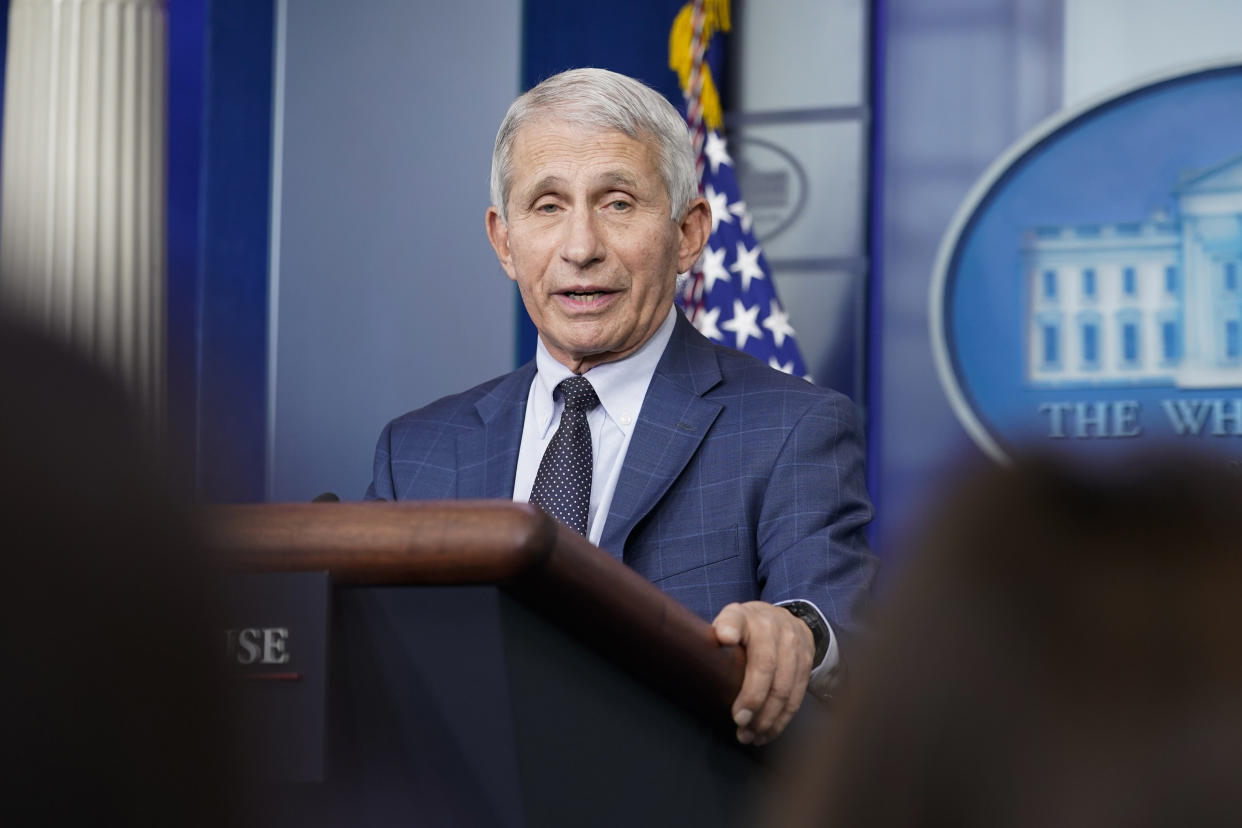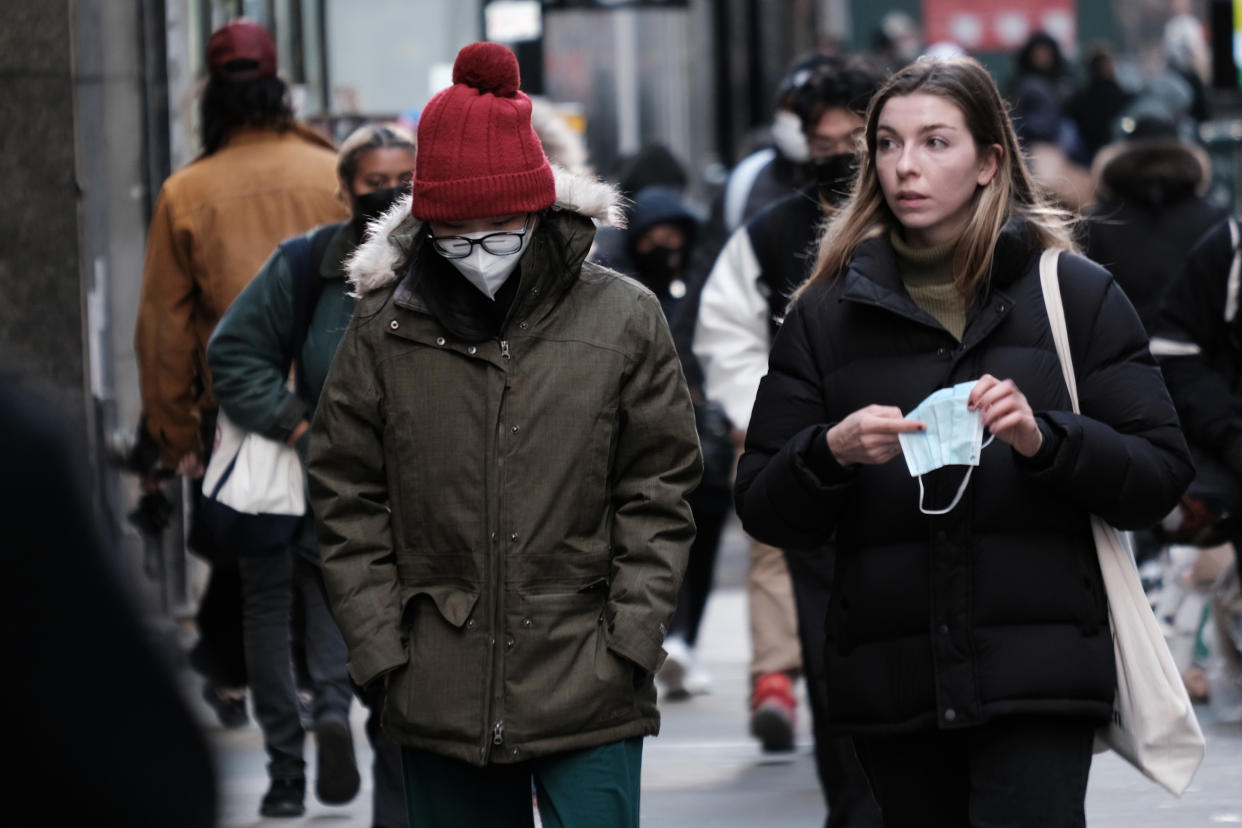1st confirmed U.S. case of Omicron variant detected in California
Less than a week after it was first detected in South Africa, U.S. health officials said Wednesday that the country’s first case of the new Omicron coronavirus variant has been confirmed in California.
Dr. Anthony Fauci, the nation’s top infectious disease expert, announced the news at a White House press briefing.
“The California and San Francisco departments of public health and the CDC have confirmed that a recent case of COVID-19 among an individual in California was caused by Omicron variant,” Fauci said.
The individual was a fully vaccinated traveler who returned from South Africa on Nov. 22 and tested positive on Nov. 29, Fauci said. The person, who has not been publicly identified, is self-quarantining and experiencing mild symptoms, which Fauci said “appear to be improving.” Contact tracing has been conducted, Fauci added, and all of the person's close contacts have tested negative so far.
“We knew that it was just a matter of time,” he said.
California Gov. Gavin Newsom said that the state’s “large-scale testing and early-detection systems” uncovered the case, adding: “We should assume that it’s in other states as well.”
“There’s no reason to panic,” Newsom tweeted. “But we should remain vigilant. That means get vaccinated. Get boosted. Wear a mask indoors.”
Dr. Rochelle Walensky, director of the Centers for Disease Control and Prevention, said Tuesday that the agency was actively looking for the variant but had not yet found a case.
The Omicron variant, tagged as B.1.1.529, was first reported to the World Health Organization by South Africa on Nov. 24. The WHO classified Omicron a “variant of concern” on Friday due to a high number of mutations that could help the virus evade vaccines and spread more easily.
It has since been detected in more than a dozen countries or regions, including Australia, Austria, Belgium, Botswana, Britain, Canada, the Czech Republic, Denmark, France, Germany, Hong Kong, Israel, Italy, Japan, the Netherlands, Portugal and now the United States.

Despite global travel bans, the first U.S. case was widely expected. On Sunday, Fauci said Omicron’s arrival in the United States was inevitable.
“When you have a virus that has already gone to multiple countries, inevitably it will be here,” he said on ABC’s “This Week.” “The question is, will we be prepared for it?”
On Monday, President Biden said the arrival of Omicron would not lead to new restrictions even as he admitted that little is known about this newest strain.
“This variant is a cause for concern, not a cause for panic,” he told reporters at the White House.
Biden vowed that his administration would fight the new variant “not with shutdowns or lockdowns, but with more widespread vaccinations, boosters, testing and more.”
For the U.S. — and for the rest of the world — the question now is whether that will be enough to contain the variant. Nobody knows for sure.
The biggest worry about Omicron is that it can evade key antibodies, potentially rendering the existing vaccines (and immunity acquired through prior infection) less protective. Its many mutations — as well as its rapid spread across South Africa, a country that just recovered from a big COVID spike driven by the hypercontagious Delta variant — suggest that that’s a real possibility, at least when it comes to infection. (Most experts anticipate substantial immunity against severe disease.)
On Monday, Moderna CEO Stéphane Bancel predicted that the Omicron variant would cause a “material drop” in the effectiveness of the vaccines.
“There is no world, I think, where [the effectiveness] is the same level ... we had with Delta,” Bancel told the Financial Times on Monday. “All the scientists I've talked to ... are like ‘this is not going to be good.’”
Scientists are also studying whether Omicron is more transmissible than Delta, as well as whether it is more likely to cause severe illness or death. Preliminary answers are expected in early December.
____
The latest on the Omicron variant
So far, early data from South Africa shows that while cases in Guateng, the epicenter of the Omicron outbreak, are rising faster than during previous waves, hospitalizations are not.
“For cases to be rising faster while admissions are on [the] same pace may hint at a lower proportion of severe disease,” explained data journalist John Burn-Murdoch of the Financial Times. “But this may also simply be the result of more infection-acquired immunity and [vaccination], or of cases so far being predominantly younger people.”
Likewise, the “share of patients in [the] ICU [is] currently much lower than [at the] same stage of [the] Delta wave, but may change if cases spread from being mainly young,” Burn-Murdoch continued. “Or may not, which would suggest T- and B-cells kicking in” — a reference to other immune defenses that tend to be less affected by mutations.
In other words, no red flags about virulence have emerged yet — but it’s still too early to say for sure.

As Omicron tries to gain a foothold in the U.S., it’s likely to face more resistance than in South Africa. Here, 59 percent of the population is fully vaccinated; there, the rate is just 24 percent. Tens of millions of additional Americans have acquired at least some immunity through infection. Boosters — which enlarge “the capacity of your immune system to recognize all kinds of different spike proteins it’s never seen,” according to Francis Collins, director of the National Institutes of Health — are both abundant and now recommended for all adults. And far from fizzling out, as happened in South Africa when Omicron was first detected, the Delta variant is currently causing an average of more than 80,000 new U.S. cases per day — substantial competition for any novel variant. The more people who are currently infected with a different, highly infectious strain, the fewer hosts are available for a newcomer to latch onto.
It’s possible, in fact, that in terms of infectiousness, Omicron has more in common with the Alpha variant (with which it shares a key spike-protein mutation) than with the hypercontagious Delta (which benefits from a different mutation). In that scenario, the newer variant would have to rely on breakthrough infections and reinfections to outcompete its predecessor. The degree to which it could do that would be highly dependent on just how evasive it is, along with how quickly the U.S. moves to immunize and boost its population while approving new antiviral treatments and potentially updating its vaccines (a process that’s likely to take three months or so).
Yet it’s also possible that Omicron’s 50-plus mutations do make it, in the words of Moderna president Stephen Hoge, the “Frankenstein mix of all of the greatest hits” many experts fear, and that the new variant starts to take off.
For comparison’s sake, Delta was first detected in the U.S. in March. In early April, it represented just 0.1 percent of U.S. cases, according to the CDC. By early May, the variant accounted for 1.3 percent of cases. By early June, that figure had jumped to 9.5 percent.
One month later — by July 6 — Delta was the dominant strain in the U.S.

Explore how the Delta variant correlates with the national political landscape in this 3D experience from the Yahoo immersive team.

